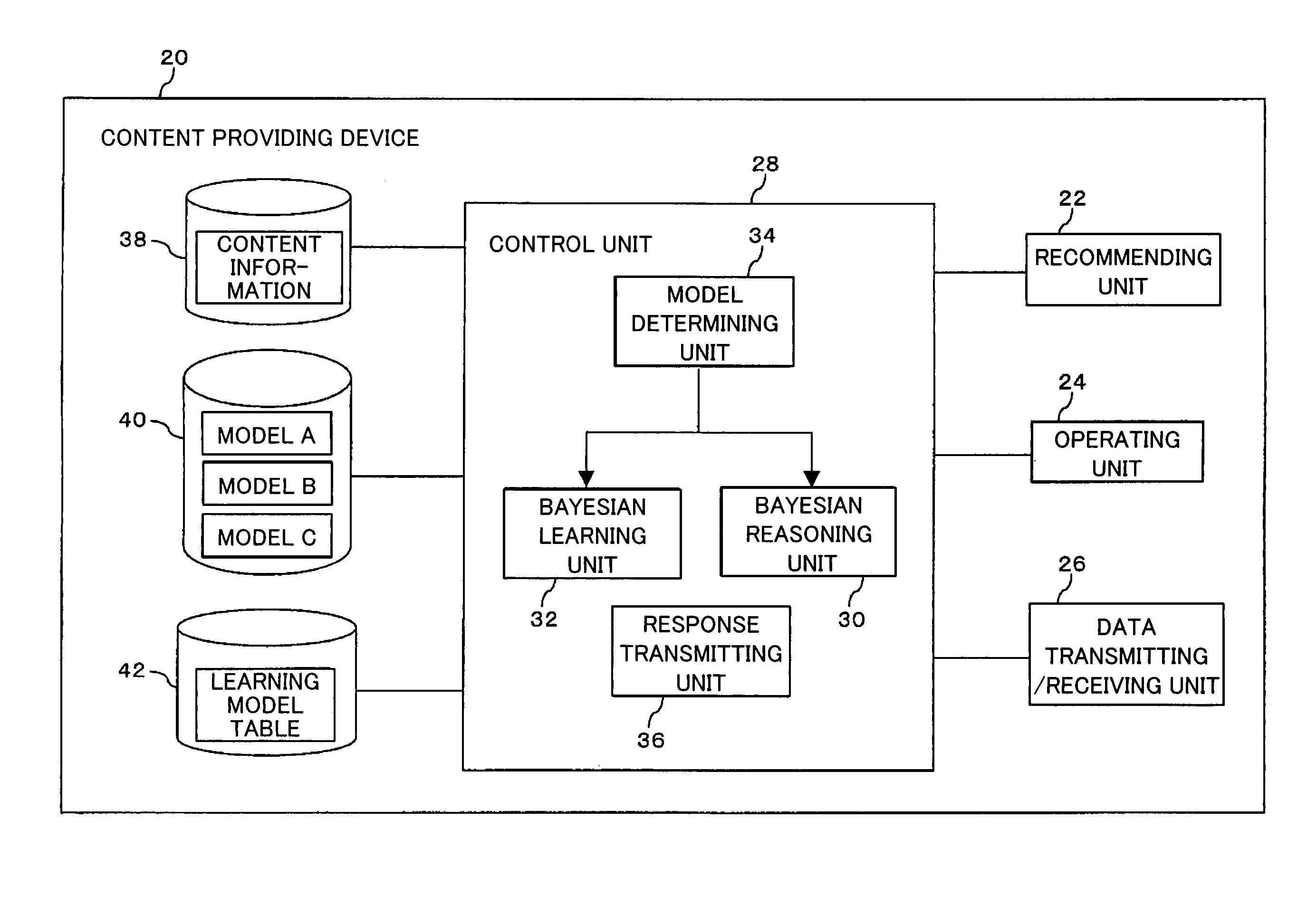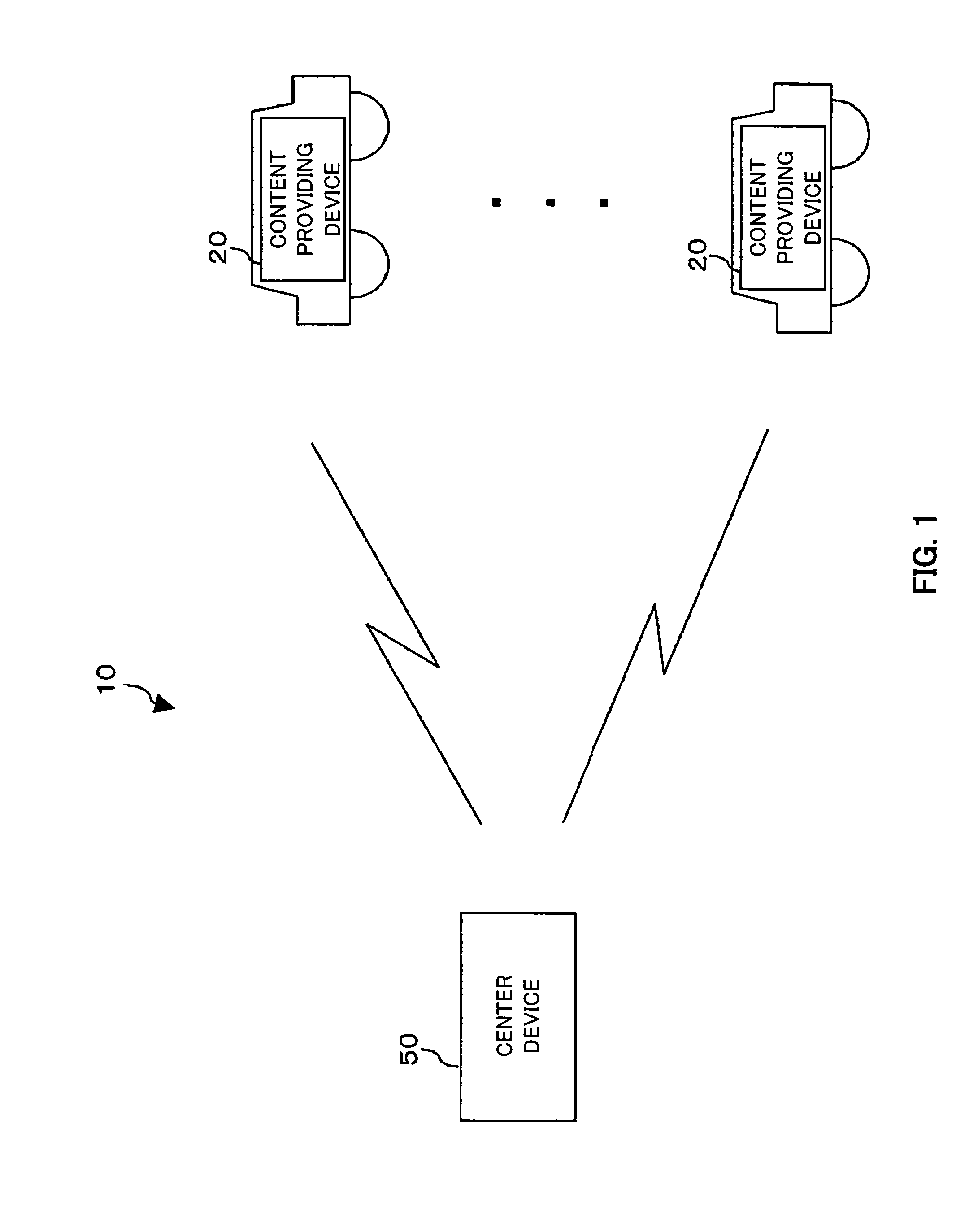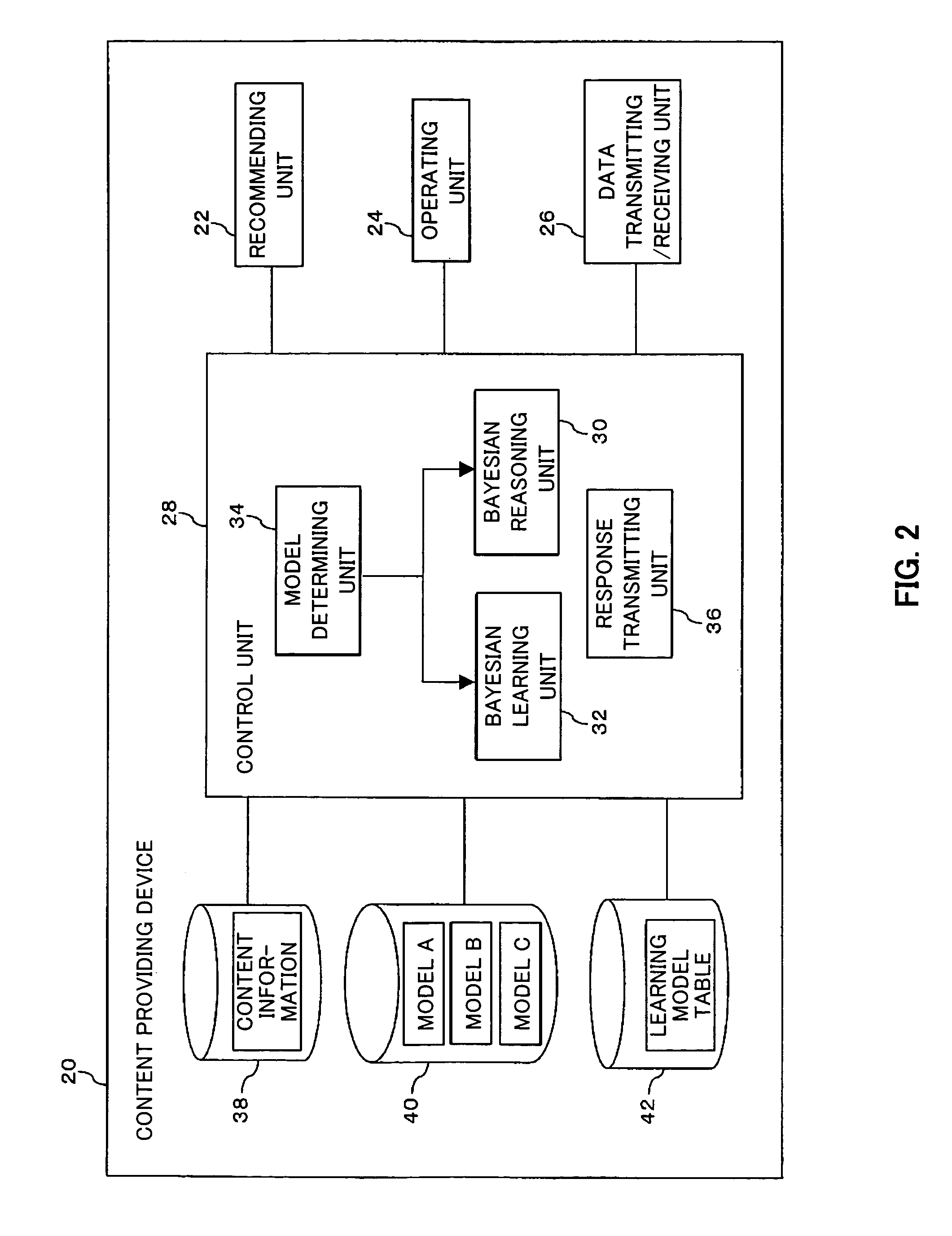Vehicle information processing system for content recommendation using Bayesian network models
a content recommendation and information processing technology, applied in the field of vehicle information processing system, can solve problems such as single answer
- Summary
- Abstract
- Description
- Claims
- Application Information
AI Technical Summary
Benefits of technology
Problems solved by technology
Method used
Image
Examples
first embodiment
[0083]Now, operations of the information processing system 10 in a first embodiment will be described.
[0084]FIG. 7 is a diagram showing operations of the information processing system 10 in the first embodiment. First, in order to auto-play songs, each content providing device 20 determines a model for obtaining content appropriate for the user (S10). The content providing device 20 determines one model out of the three models stored in the model storage unit 40. In this embodiment, the content providing device 20 displays on the recommending unit 22 information about the models stored in the model storage unit 40 receives a selection of a model via the operating unit 24. Here, it is assumed that a selection of the model A for the father is received via the operating unit 24. The model determining unit 34 is informed of the information received via the operating unit 24 and determines the model for obtaining the content.
[0085]Then, the Bayesian reasoning unit 30 in the content provi...
second embodiment
[0097]FIG. 8 is a diagram showing exemplary data stored in the learning model table storage unit 42 in the As shown in FIG. 8, the learning model table storage unit 42 contains information about the application models and the learning models, as well as reflection parameters. A reflection parameter indicates the degree to which the user responses are reflected in a learning model. The reflection parameters can be used to adjust the degree to which the responses are reflected in the respective models. For example, if the application model is the model A for the father, the degree to which the learning using responses to this model is reflected in the model C for the family is “0.2”, whereas the degree to which responses obtained using the model C is reflected in the model C is “1.”
[0098]FIG. 9 is a diagram showing operations of the information processing system 10 in the second embodiment. The information processing system 10 in the second embodiment is similar to the first informat...
third embodiment
[0106]In the third embodiment, the learning data for learning models is generated based on the response information aggregated from the content providing devices 20, to which the generated learning data is then delivered. The content providing devices 20 use the delivered learning data to learn models. Therefore, the specificity of the models depending on the recommendation-condition can be reduced, and the specialized models suitable for the probabilistic reasoning under the recommendation-condition can be brought closer to the general model.
[0107]Thus, the information processing system of the present invention has been described in detail with respect to the embodiments. However, the present invention is not limited to the described embodiments.
[0108]The above embodiments have assumed that the content providing device 20 includes the Bayesian reasoning unit 30 and the Bayesian learning unit 32, and the content providing device 20 reasons out the content appropriate for the user an...
PUM
 Login to View More
Login to View More Abstract
Description
Claims
Application Information
 Login to View More
Login to View More - R&D
- Intellectual Property
- Life Sciences
- Materials
- Tech Scout
- Unparalleled Data Quality
- Higher Quality Content
- 60% Fewer Hallucinations
Browse by: Latest US Patents, China's latest patents, Technical Efficacy Thesaurus, Application Domain, Technology Topic, Popular Technical Reports.
© 2025 PatSnap. All rights reserved.Legal|Privacy policy|Modern Slavery Act Transparency Statement|Sitemap|About US| Contact US: help@patsnap.com



